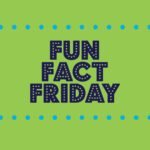Reviewed by Soliu.
The following is a list of the region or states in Ghana along with their respective capital cities: Ahafo – Goaso, Ashanti – Kumasi, Bono East – Techiman, Bono – Sunyani, Central – Cape Coast, Eastern Region – Koforidua, etc.
The history of Ghana can be traced back to the 11th century when the Kingdom of Ghana was established.
The kingdom was a prosperous commercial empire that dominated a significant portion of the gold trade in West Africa during its time.
The Kingdom of Ghana was one of Africa’s wealthiest and most powerful at the height of its dominance.
Even after the collapse of the Kingdom of Ghana in the 13th century, a large number of distinct ethnic groups remained to call this area home.
In the 15th century, Portuguese settlers came to Ghana and immediately established commercial relationships with the indigenous people there.
The Dutch, the British, and the Danes were among the subsequent European powers to colonize the area after the Portuguese.
The European powers started to trade for gold, slaves, and other products after establishing trading stations along the coast of Ghana. These trading posts were located in Ghana.
The transatlantic slave trade had a severe effect on Ghana since it resulted in the forced removal and abandonment of millions of people from their homes and subsequent sale into slavery.
In the 19th century, the British increased their grip over Ghana by expanding their influence there. The early establishment of the British Gold Coast Colony took place in 1901.
The British Empire maintained control over Ghana until 1957, when the nation became independent.
Since its independence, Ghana has been a democracy that has remained generally stable. Despite this, the nation struggles with various problems, such as widespread poverty, pervasive corruption, and unstable governmental systems.
The Ghana of Today
Ghana is a nation with a lower-middle income and an economy that is expanding at a quick rate. The nation has many valuable natural resources, including cocoa, gold, and oil.
Cassava, yams, and plantains are just a few of the agricultural goods that Ghana is known for producing in large quantities. Over the last several years, Ghana has achieved significant headway in the country’s overall human development.
The literacy rate in this nation is very high, and the incidence of infant mortality is among the lowest in the world. Despite this, poverty continues to be a significant obstacle, as millions of Ghanaians still live below the country’s official poverty line.
Ghana is a member of the African Union, the Economic Community of West African States (ECOWAS), and the Commonwealth of Nations. Additionally, the nation has a seat on the United Nations Security Council only as a non-permanent member.
States in Ghana and their Capitals
1. Ahafo

Capital: Goaso
GDP: $1.4 billion
Population: 584,048 (2021 census)
The most notable feature is that Ahafo is a recently established area separated from Brong Ahafo in 2019. Cacao, coffee, and cassava are just a few of the agricultural products this area is famous for producing.
In addition, it is home to the Goaso Botanical Gardens, a well-known attraction for vacationers.
2. Ashanti

3. Capital: Kumasi
GDP: $9.3 billion
Population: 5,476,893 (2021 census)
The Ashanti region of Ghana is the most populated in all of Ghana and serves as the cultural and economic hub of the nation.
The region’s cocoa, coffee, and lumber production are among its most well-known exports, in addition to the gold mining business.
In addition, it is the location of the Manhyia Palace, which serves as the official house of the Asantehene, who is the traditional leader of the Ashanti people.
4. Bono East
Capital: Techiman
GDP: $1.7 billion
Population: 612,724 (2021 census)
The most notable feature is that Bono East is a recently established area separated from the Brong Ahafo region in 2019.
This part of the world is famous for its agricultural output, which includes cocoa, coffee, and cassava, among other things.
Additionally, it is the location of the Bono East Regional Museum, which preserves historical relics from the surrounding area and displays them for visitors.
5. Bono

Capital: Sunyani
GDP: $1.8 billion
Population: 587,101 (2021 census)
Major characteristics: Bono is a newly created region, carved out from the Brong Ahafo region in 2019. The region is known for its agricultural production, including cocoa, coffee, and cassava.
It is also home to the Sunyani Forest Reserve, a popular hiking destination.
6. Central
Capital: Cape Coast
GDP: $4.7 billion
Population: 2,601,050 (2021 census)
The Central region is a coastal area with a robust agricultural industry. This is one of the region’s defining traits.
The area is well-known for producing cocoa, coffee, and palm oil due to its tropical climate. In addition, it is the location of Cape Coast Castle, which is both a UNESCO World Heritage Site and an old fort used in the slave trade.
7. Eastern Region
Capital: Koforidua
GDP: $2.5 billion (2021)
Population: 3.1 million (2021 census)
The Eastern Region is one of the most diversified areas in Ghana in terms of its landscapes, customs, and economic activity.
As a result, it is home to a wide diversity of people. It is well-known for the steep topography, dense woods, and waterfalls that it contains.
In addition, it is the location of various historical and cultural landmarks, including the Boti Falls, the Amedzofe Mountains, and the Kwame Nkrumah Memorial Park.
8. Greater Accra Region

Capital: Accra
GDP: $15.7 billion (2021)
Population: 5.5 million (2021 census)
The Greater Accra Region is the most populated in Ghana and serves as the nation’s economic heart. It is also the region with the highest per capita income.
Accra, the nation’s capital and largest city, as well as the country’s most important port and economic hub, is located here. The Greater Accra Region is a crucial hub for various economic activities, including tourism, manufacturing, and trade.
9. North East Region
Capital: Nalerigu
GDP: $1.3 billion (2021)
Population: 790,000 (2021 census)
The North East Region is one of the newest regions in Ghana, having been founded in 2019. This is one of its primary distinguishing traits.
A dry savanna climate prevails across this rural area. It is well-known for its nature preserves, such as the Mole National Park and the Bui National Park.
10. Northern Region
Capital: Tamale
GDP: $2.4 billion (2021)
Population: 2.9 million (2021 census)
The Northern Region is one of the most populated and one of the most prominent regions in Ghana. Additionally, it is one of the largest regions in Ghana.
A dry savanna climate prevails across this rural area. It is well-known for its nature preserves, such as the Mole National Park and the Bui National Park.
11. Oti Region
Capital: Dambai
GDP: $1.4 billion (2021)
Population: 630,000 (2021 census)
The Oti Region is one of the newest regions in Ghana, having been established in 2019, making it one of its most notable qualities.
It is a rural area with a climate often associated with dense forests. It is famous for its waterfalls, including the Wli and Tagbo Falls.
12. Savannah Region
Capital: Damongo
GDP: $1.2 billion (2021)
Population: 440,000 (2021 census)
The Savannah territory is a brand-new territory, carved out of the Northern Region in 2019. This is one of the regions or states in Ghana that are defining qualities.
Shea nuts, cotton, and cowpeas are just a few of the agricultural products the area is famous for producing. In addition, the Mole National Park, Ghana’s most extensive wildlife preserve, is located here.
13. Upper East Region
Capital: Bolgatanga
GDP: $1.1 billion (2021)
Population: 1.3 million (2021 census)
The Upper East Region is primarily rural and has a dry savanna climate. This is one of the region’s defining features.
It is famous for its agricultural output, which includes millet, sorghum, and cowpeas, among other things. In addition, it is home to the Paga Crocodile Pond, a famous site for tourists.
14. Upper West Region
Capital: Wa
GDP: $1.0 billion (2021)
Population: 890,000 (2021 census)
The Upper West Region is primarily rural and has a dry savanna climate. This is one of its most distinguishing features. It is famous for its agricultural output, which includes millet, sorghum, and cowpeas, among other things.
In addition, it is home to the Gbele Game Reserve, a well-known tourist attraction known for its abundant wildlife.
15. Western Region
Capital: Sekondi-Takoradi
GDP: $3.5 billion (2021)
Population: 2.6 million (2021 census)
The Western area is a coastal area that has a tropical rainforest climate. This is one of its most prominent traits. It is well-known for its natural resources, which include gold, diamonds, and lumber, among other things.
Additionally, it is the location of various tourist destinations, such as the Kakum National Park and the Nzulezo Stilt Village.
16. Western North Region
Capital: Wiawso
GDP: $1.3 billion (2021)
Population: 1.0 million (2021 census)
The Western North area was split from the Western Region in 2019, making it a whole new area with distinct qualities. This part of the world is famous for its agricultural output, which includes cocoa, coffee, and oil palm.
It is also the location of the Ankasa Conservation Area, a famous tourist attraction for observing animals.
17. Volta Region
Capital: Ho
GDP: $2.1 billion (2021)
Population: 2.5 million (2021 census)
The climate of the Volta Region is characterized as tropical rainforest, while the Volta Region is located on the coast. It is famous for its natural resources, such as bauxite, gold, and lumber.
In addition, it is the location of various tourist attractions, one of which is the Wli Waterfalls, the tallest in Ghana.
FAQs
What are the wealthiest regions or states in Ghana?
Greater Accra, Ashanti, Central, and Eastern regions significantly reduced the number of people living in poverty, whilst Upper West, Upper East, Northern, and Volta regions experienced an increase in the number of people living in poverty during this period.
Which region is the poorest in the states in Ghana?
Nkwanta North District in the Oti Region is the district in Ghana with the highest poverty rate, at 79.7%, more than double the national number of 29.9%. This district is located in the Oti Region.
What is the most powerful tribe in Ghana?
The Ashanti, also known as the Asante, were the major ethnic group of a great empire in the 19th century and continue to be one of the largest ethnic groups found in Ghana today, with more than two million individuals concentrated in the country’s south-central region.
What is the oldest tribe in Ghana?
It is thought that the Guan people were the first to settle in Ghana. They came from the Mossi area, located in what is now Burkina, around 1000 AD.
Conclusion
Ghana is a nation that has a long and illustrious past, as well as an exciting and promising future. The nation has achieved considerable advancements in recent years, yet it still confronts many obstacles.
Ghana is a country that is a part of the international community and is dedicated to cooperating with other nations to advance world peace and economic growth. The states in Ghana are self-reliant on themselves, as proven by their GDP.
Know of some other states in Ghana that were not mentioned in this piece, kindly say it in the comment box.










i love 💕 Ghana so much and I like to get there becuse is a good place to stay and so I will no more about them,